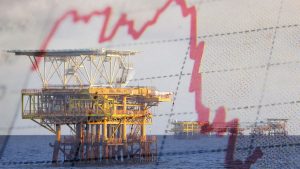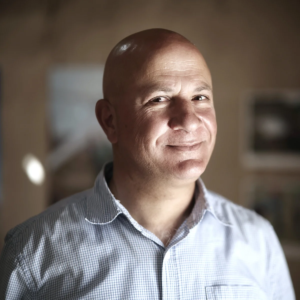As the island eyes tourism and mining it is also mindful of controlling the cost
Ujarneq Egede’s farm sits among a cluster of compact houses and squat barns on the snowy slopes of Equaluit Ilua in southern Greenland. The journey from Narsaq, the nearest town, involves a 30 minute boat trip across the fjord, mooring on a sheet of ice and a snowmobile ride up to the farm.
This is the biggest island in the world, yet Greenland’s population is tiny – less than 57,000 of whom nearly 90% are Inuit, concentrated around the jagged coastline. The country’s remoteness is extreme: there are no roads or railways between towns and settlements. Transport is only by boat, helicopter and propeller planes – ice, winds and storms permitting.
Narsaq itself is a small town of about 1,300 people, where jobs revolve around fishing, farming, a slaughterhouse and summer tourism. Its population has fallen 25% since 1991.
Meanwhile, on his farm, Egede grows potatoes and raises 750 sheep, huddled in barns during the winter and ranging across the grassy mountains throughout summer.
To be a farmer in Greenland is to have a front row seat to the climate crisis. Egede tracks the changes – “summer is sometimes really dry, other times there is too much rain. This winter was really late”. Where once they could drive on the frozen fjord during winter, now that never happens, he says.
It is not just climate that worries him, however. Egede’s farm is in the shadow of Kvanefjeld, a proposed open-pit uranium and rare earth elements mine. Fearing what it may do to the surrounding environment and his farm, he was immensely relieved when plans for the mine were recently halted after the new government, elected in April 2021, banned uranium mining. But the threat still simmers. Egede is not sure it isover.
This southern slice of Greenland, where the main sources of employment include farming, fishing and tourism, has found itself at the sharp end of a quandary the country is reckoning with: how to develop the economy without doing so at the expense of its environment and its people, who rely on the pristine Arctic landscape for their livelihoods. In its own, Greenland way, it is a microcosm of the dilemma facing huge parts of the world.
Melting ice sheets and fast-warming temperatures make Greenland a totem for the climate crisis. But as the ice melts, ironically enough, opportunities arise: not only are raw materials easier to access but Greenland is becoming more accessible and tourist seasons are extending.
The relatively young government came to power in April 2021 promising pro-environmental policies: it has pledged to join the Paris climate agreement and has banned new licences for oil and gas drilling.
But Greenland’s abundant minerals have attracted the attention of countries that are currently dependent on China and Russia for the raw materials needed to build the batteries and wind turbines of the low-carbon economy. Mining may mean Greenland could move away from its financial dependence on Denmark, which gives it a grant of 3.9bn Danish krone (£440m) every year, and towards eventual independence.
In Narsaq, the Australian-based Greenland Minerals pitched the Kvanefjeld mine as a source of local opportunity. The pitch failed to impress many, including farmers such as Egede, and Naasu Lund, who lives with her husband and two children on a sheep farm in Inneruulalik, near Narsaq. Lund was part of the anti-mine group Urani? Naamik (Uranium? No).
Farmers thought they would be forced to move from farms that had been in their families for generations, says Lund, who also runs horse riding tours from her hydropowered farm. The biggest concern was the tailings pond holding the mining waste, she says, which would remain there for ever. People feared it could spill in Greenland’s fierce weather, reaching the fjord in minutes.
Urani? Naamik protested – at public consultations, through local campaigning and finally through votes. And it worked. “This is the first time I can sit in my home and think about a future that is not involved with mining,” Lund says.
Whether the mine is over is uncertain, however. Greenland Minerals has launched arbitration proceedings to “clarify the company’s position and to protect our shareholders’ considerable investment in Kvanefjeld”, according to a spokesperson, who added that a detailed environmental impact assessment had addressed all concerns about the mine. “Even under the most extreme assumptions there would not be any exceedance of WHO drinking water standards resulting from dispersal of tailings material during foehn winds [strong gusty winds].”
While Greenland’s government may be saying no to uranium, it is open to other mining and the warming climate may make projects more feasible. “Mineral deposits are exposed that had previously been under ice,” says Josephine Nymand of the Greenland Institute of Natural Resources.
In March, Kobold Minerals, which has investment from Jeff Bezos and Bill Gates, and the UK-based Bluejay Mining announced they would begin exploring for nickel, copper, cobalt and platinum group metals. Bo Stensgaard, the CEO of Bluejay Mining, says the project will operate to the “highest standards” environmentally and benefit Greenlanders through jobs and training. But there is no timeframe for when mining might start.
Herein lies the problem, says Lill Rastad Bjørst, associate professor at Aalborg University – there is a lot of talk but “close to nothing is happening”. Greenland currently has only two mines, one producing rubies and another anorthosite. Despite claims about how Greenlanders benefit from mining, “at the moment, there might be people who benefit from this development, but it’s not the people living in Greenland”, Bjørst says.
Could tourism be the answer? “We advocate for tourism,” says Idrissia Thestrup, of Visit Greenland, “because we believe by preserving nature, we can actually avoid taking the resources in the land and potentially destroying landscapes.”
Tourism was one of the country’s fastest growing industries until Covid lockdowns brought it to a shuddering halt. But 2022 will be a boom year, says Henrik Ebbe Nielsen, a tourism teacher at Campus Kujalleq, in Qaqortoq, south Greenland’s largest town. Qaqortoq alone expects to see an estimated 41 cruise ships this summer, spilling up to 47,000 tourists on to its winding, pavement-less streets.
Visitor numbers may be boosted further by an airport expansion project. Qaqortoq will get a brand new airport, with construction starting this spring, and new runways will allow larger, international planes to land in the capital, Nuuk, and Ilulissat, a town famed for its iceberg-calving glacier and dog sledding.
But bigger airports mean more aeroplanes, more emissions and more tourists. In some areas, “the local landscape is very much affected by too many tourists already”, says Bjørst.
Thestrup says framing Greenland’s airport growth as a climate problem ignores its tiny contribution to the climate crisis and its extreme remoteness. But she acknowledges the need to tread carefully. “We want tourism to be a driver for economic growth but we want to do it at a pace that respects the nature and culture of our destination.”
Greenland’s prime minister, Múte B Egede, recently set out his vision for a “resilient economy”, one that would ultimately phase out fossil fuels. Alongside fishing, rare earth mining and tourism, he predicts a future for far less tested industries, including using Greenland’s abundant hydropower resources with captured CO2 emissions to create green fuels for export. “As the ‘face’ of climate change,” he wrote in an editorial, “Greenland wants to lead by example.”
For now, the country is trying to plot a path towards increased economic freedom, while staking its claim for climate leadership. It is a path filled with uncertainty, especially as the climate crisis starts to alter people’s way of life, but uncertainty is something Greenlanders are used to.
“You cannot sit down and cry, it doesn’t help, you have to just adapt,” Lund says. “We can do it right,” she adds. “Greenland is a very sustainable country but it’s also the Arctic – nature doesn’t fix itself very fast after being destroyed, you have to be careful, it’s very fragile.”
Travel support for this piece was provided by the Craig Newmark Graduate School of Journalism at CUNY
Russia’s invasion of Ukraine has abruptly transformed the world. Millions of refugees have already fled. A new Iron Curtain is grinding into place. An economic war deepens, as the military conflict escalates and civilian casualties rise.
It’s our job at the Guardian to decipher a rapidly changing landscape, particularly when it involves a mounting refugee crisis and the risk of unthinkable escalation. Our correspondents are on the ground in Ukraine covering the war, as well as throughout the world, delivering round-the-clock reporting and analysis during this perilous moment.
We know there is no substitute for being there – and we’ll stay on the ground, as we did during the 1917 revolution, the Ukrainian famine of the 1930s, the collapse of 1991 and the first Russo-Ukrainian conflict in 2014. We have an illustrious, 200-year history reporting throughout Europe in times of upheaval, peace and everything in between. We won’t let up now.




